Getting fit and healthy isn’t a one-size-fits-all journey. Your goals might be totally different from your neighbor’s—maybe you want to shed a few pounds, stay strong as you get older, or bounce back after an injury.
Regular fitness programs sometimes just don’t cut it when you’ve got specific needs. That’s where specialized training programs come in—they’re designed to tackle your unique challenges and help you reach your goals safely.
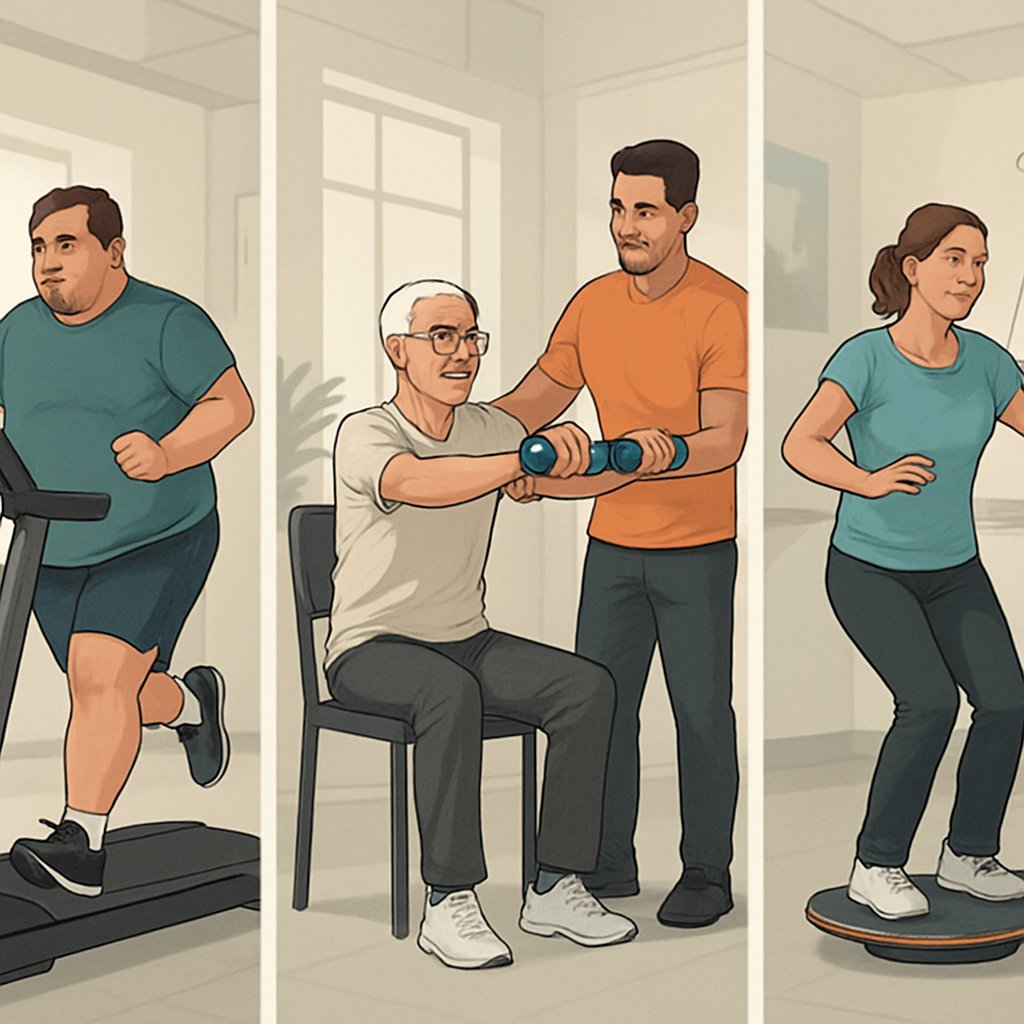
Weight loss programs mix up diet and exercise for better fat loss and metabolic health. Senior fitness programs focus on keeping adults over 50 strong, flexible, and balanced.
Post-rehab training is all about safe, guided exercises after injury or surgery.
Working with a personal trainer in Manhattan who “gets” your needs? That can totally change your results.
NYC trainers—from the Upper East Side to Midtown—are building custom programs that fit your life and your health concerns.
Key Takeaways
- Specialized training programs are built for goals like weight loss, senior fitness, and injury recovery.
- They’re designed for safety and effectiveness, focusing on your unique needs and limitations.
- Qualified trainers help you pick the right exercises and progress at your own pace.
Overview of Specialized Training Programs
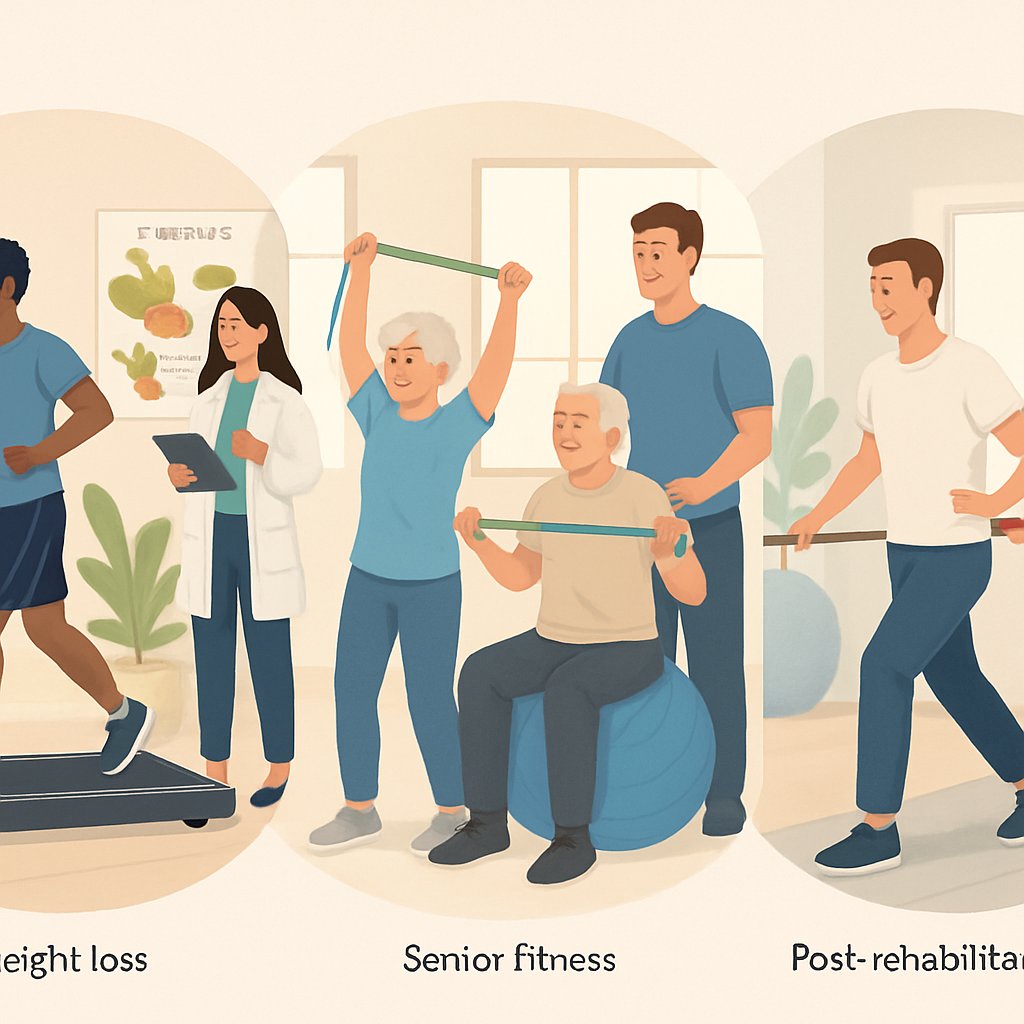
Specialized training programs target your specific fitness goals with customized approaches. They take your needs, limitations, and objectives into account.
You’ll need a thorough assessment and a coach who knows what they’re doing. That’s how you get safe, effective results.
Personalized Approach and Assessment
Every specialized training program starts with a deep dive into your fitness level, medical history, and goals. A solid Manhattan trainer will look at your movement patterns, strength, flexibility, and any physical limits before building your plan.
You can expect:
- Medical clearance review if you’re doing post-rehab or senior fitness
- Functional movement screening to spot mobility issues
- Baseline fitness testing to see where you’re starting
- Goal-setting chat to set realistic targets
Weight loss programs usually involve body comp checks, metabolic rate measurements, and a look at your eating habits. Senior fitness specialization means trainers need to know how aging changes your body.
Post-rehab programs? Trainers need to work closely with your healthcare team, understand your injury, and time your recovery right.
Role of Personal Training in Fitness Goals
Personal training is that missing link between generic advice and what actually works for you. A good NYC trainer brings expertise, keeps you accountable, and makes sure you’re moving safely.
Here’s what they do:
- Design and tweak your program
- Teach you proper technique
- Track your progress and adjust as needed
- Keep you motivated (even on the tough days)
Most gyms offer a free consultation so you can talk through your goals. It’s a good way to see if the trainer’s style fits you.
Trainers who focus on weight loss usually mix in some nutrition basics. Senior fitness programs are about keeping you independent and steady on your feet.
Benefits of Individualized Programming
Individualized programs just work better than cookie-cutter plans. They fit your life, your preferences, and whatever curveballs you’ve got.
What’s in it for you?
- Faster progress because the plan is dialed in
- Fewer injuries thanks to smart exercise choices
- Motivation that lasts because it’s personal
- Flexibility as your needs or schedule change
Specialized programs can even tackle more than one goal at a time. Weight loss plans, for example, might use strength training to help you keep muscle.
Personal attention means your form gets checked and exercises get tweaked. That’s extra important for seniors or anyone coming back from an injury.
Your trainer can switch things up if you’re not feeling it, your schedule changes, or your goals shift. That kind of flexibility keeps you moving forward.
Weight Loss Programs
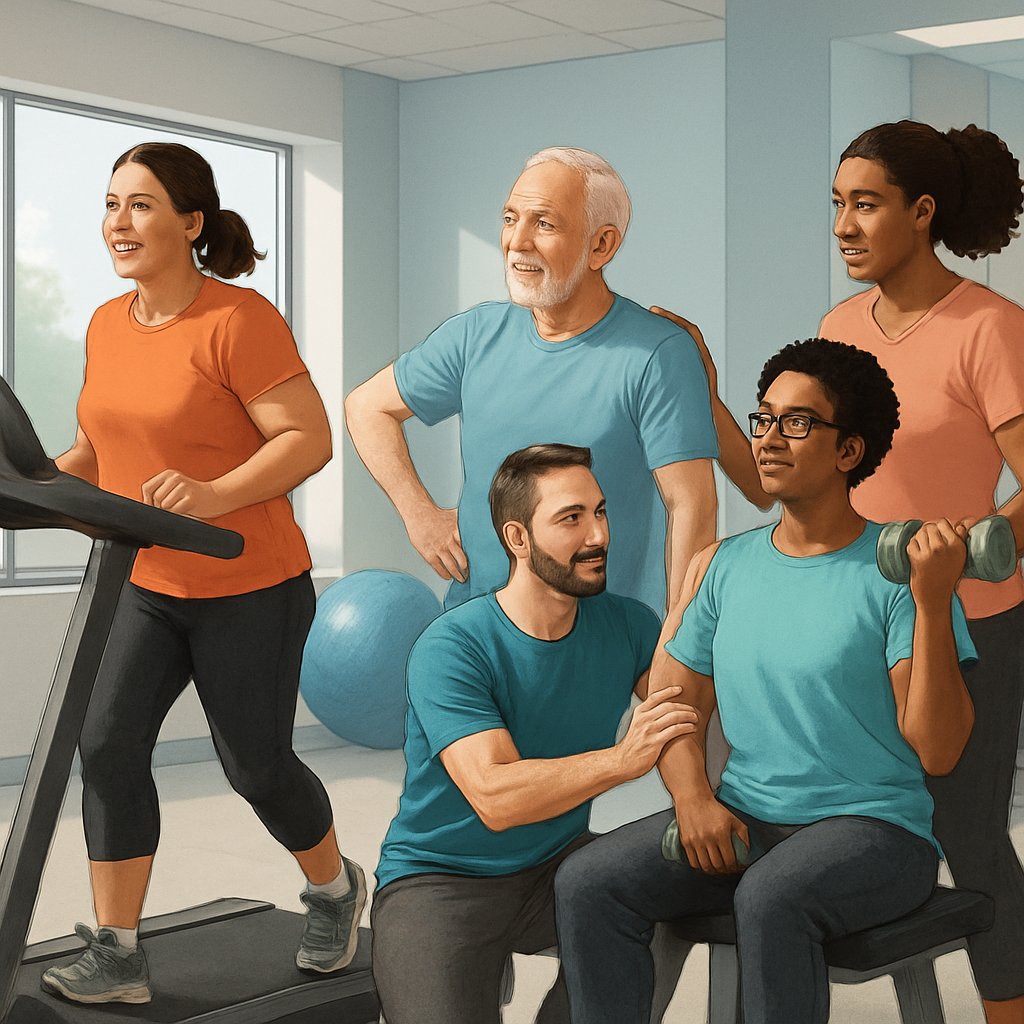
Weight loss programs that work blend science-backed methods, nutrition guidance, and smart movement. The best ones help you build strength and burn fat with routines you can actually stick to.
Scientifically Proven Weight Loss Methods
Mixing strength training and cardio is the magic combo for fat loss. A personal trainer NYC can set you up with smart, research-backed strategies—no crash diets or crazy workouts needed.
Here’s what tends to work:
- Progressive resistance training—builds muscle, fires up your metabolism
- HIIT (High-Intensity Interval Training)—burns calories during and after
- Moderate cardio—boosts heart health and endurance
You’ll see faster results if you create a calorie deficit with both diet and exercise. More muscle means more calories burned, even at rest.
Manhattan fitness centers often use metabolic conditioning—basically, strength moves mixed with cardio for max calorie burn in less time.
Nutritional Guidance and Meal Planning
Honestly, nutrition is most of the battle—think 70-80% of your results. Coaching helps you build habits that last, not just follow some restrictive diet for a month.
Meal planning basics:
- Protein at every meal—keeps you full and helps with muscle
- Portion control—no need to count every calorie
- Whole foods—better nutrition, less processed junk
A personal trainer upper east side NYC can hook you up with local nutrition experts. In Manhattan, meal prep services are a lifesaver for busy folks.
Weekly meal prep makes a big difference. Prepping proteins, veggies, and snacks ahead of time keeps you on track when life gets hectic.
Functional Fitness for Fat Loss
Functional fitness is all about movements you use in real life. These exercises burn calories and make everyday stuff easier.
Some key moves:
| Exercise Type | Benefits | Examples |
|---|---|---|
| Compound movements | Work lots of muscles at once | Squats, deadlifts, push-ups |
| Core integration | Builds stability and posture | Planks, wood chops, carries |
| Movement patterns | Gets you ready for daily life | Lunges, step-ups, rotations |
A personal trainer midtown NYC can build these into workouts that actually fit your schedule.
Circuit training is popular—move from one exercise to the next with little rest. You keep your heart rate up and build strength at the same time.
Personal trainer west village NYC gyms sometimes use parks and city spaces for variety. It keeps things interesting, honestly.
Senior Fitness Programs

Senior fitness programs are built for the challenges that come with aging. They help you stay strong, avoid falls, and manage health conditions—so you can stay active on your own terms.
Safe Exercise for Aging Adults
If you’re starting a fitness routine later in life, you’ll want to ease in and get the right guidance. Low-impact activities are usually best for your joints and bones.
Try these:
- Walking (outdoors or treadmill)
- Swimming or water aerobics
- Stationary bike
- Chair workouts
- Resistance bands
Start with 10-15 minutes and work your way up. Trainers who specialize in senior fitness know how to work around limitations and still give you a solid workout.
It’s smart to check with your doctor before you jump in—especially if you’ve got health conditions or take meds that could affect your workouts.
Improving Balance, Flexibility, and Posture
Balance becomes more important as you age. Falls are scary, and nobody wants to lose their independence.
A few balance exercises:
- Stand on one leg
- Walk heel-to-toe
- Try some tai chi moves
- Stand on a cushion or wobble board
- Do side leg raises
Stretching helps keep your joints moving and stops you from getting stiff. Posture can slip as you get older, but core and back work can help you stay upright.
Senior fitness programs put a big focus on balance. Group classes in Manhattan are a great way to meet people and work on flexibility together.
Managing Chronic Conditions in Seniors
Exercise can help you handle health stuff like osteoporosis, high blood pressure, and diabetes.
For osteoporosis, weight-bearing moves like walking, dancing, or stair climbing can help. Resistance training is a must for bone strength.
If you have hypertension, moderate aerobic exercise (like brisk walks or swimming) can help lower blood pressure. Aim for 30 minutes most days.
Diabetes? Both cardio and strength training help your body use insulin better.
Post-rehab fitness programs make the jump from physical therapy back to regular exercise safer. They’re for folks recovering from strokes, joint replacements, or other big medical stuff.
A good personal trainer in the Upper East Side or Midtown can team up with your doctor or PT to make sure your program fits your needs.
Maintaining Independence and Quality of Life
Senior fitness isn’t just about lifting weights—it’s about doing the stuff you love and need to do every day.
Some functional ideas:
- Squats so you can get up from chairs
- Step-ups for stairs
- Carrying exercises for groceries
- Reaching and stretching for daily tasks
- Walking practice for getting around
SilverSneakers programs are all over Manhattan. They offer classes online and in-person just for seniors.
Group fitness is good for your social life, too. Working out with others who get what you’re going through makes a difference.
Strength training keeps you strong enough to open jars, carry bags, or just feel confident moving around.
The main goal? Stay active and keep doing what you love. Whether that’s yoga in the West Village or walking in Central Park, showing up for yourself matters.
Post-Rehab Training and Conditioning
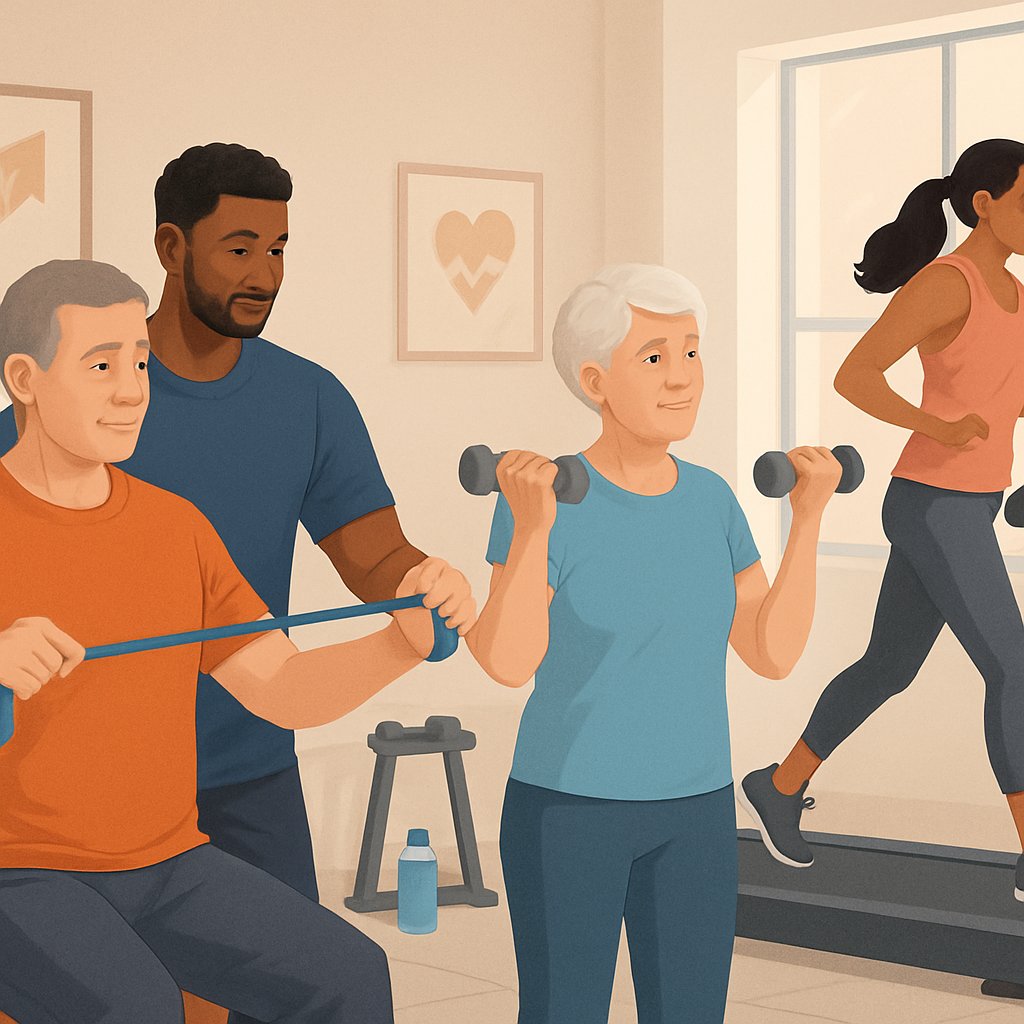
Post-rehab training helps you bridge the gap between physical therapy and getting back to your regular fitness routine. It’s about keeping the progress you made in rehab, building strength, and avoiding another injury.
The trick is to design a program that fits your medical history and recovery timeline. That way, you can focus on long-term recovery with functional moves that make sense for your body.
Transitioning from Rehabilitation to Fitness
Moving from physical therapy to working out on your own? It’s a big step, and honestly, it takes some planning and a bit of expert help. Post-rehab programs bridge the gap between physical therapy and independent exercise, so you can keep building strength and start trusting your body again.
A good personal trainer in Manhattan—one who really gets post-rehab conditioning—will actually listen to your physical therapist’s advice. They’ll check out what you can do right now and spot any leftover issues.
Key transition elements include:
- Movement screening and assessment
- Gradual exercise progression
- Pain monitoring protocols
- Communication with healthcare providers
Your NYC personal trainer should focus on restoring functional deficits and improving strength through structured exercise programs. That way, you won’t lose the gains you made in rehab.
Plenty of folks in Manhattan’s fast-paced scene jump back into tough workouts too soon. Usually, a solid transition takes about 4-8 weeks, but it really depends on how you’re healing.
Designing Programs for Common Conditions
Different medical conditions definitely need their own exercise tweaks and safety steps. Post-rehab programs provide safe and effective fitness assessments on clients with medical disorders—no one wants a flare-up.
Diabetes management is all about steady exercise schedules and keeping an eye on blood sugar. Your Upper East Side trainer should actually check your glucose and adjust your workouts if needed.
Osteoporosis programs lean on weight-bearing and resistance moves to help your bones stay strong. Skip forward bends and anything too jarring, since those can up the fracture risk.
Hypertension protocols include:
- Gradual warm-up periods
- Avoiding breath-holding during exercises
- Monitoring blood pressure responses
- Emphasizing rhythmic, continuous movements
Fibromyalgia conditioning takes a gentler touch. Trainers in Midtown NYC should stick to low-impact exercises and be flexible with scheduling, since symptoms can shift day to day.
Every condition needs its own approach. A sharp personal trainer in the West Village will tweak standard exercises so you can keep moving forward safely.
Long-Term Recovery and Injury Prevention
Getting through rehab is just the start. Long-term, you want to move well and avoid getting hurt again. Post-rehab conditioning addresses your functional needs and overall fitness goals while helping you sidestep future injuries.
Functional fitness really matters for staying injury-free. Your Manhattan trainer should focus on moves you actually use in life—lifting, reaching, climbing stairs, that sort of thing.
Progressive overload principles guide your long-term development:
- Gradual increases in exercise intensity
- Systematic progression of movement complexity
- Regular reassessment of capabilities
- Adaptation based on response to training
Your NYC trainer should run regular movement screens to catch any weird imbalances early. It’s way easier to fix things before they get out of hand.
Maintenance strategies include:
- Consistent exercise scheduling
- Ongoing education about your condition
- Periodic check-ins with healthcare providers
- Lifestyle tweaks that support your recovery
Sticking with your training and having a trainer who adapts as you change—that’s what leads to real, lasting results.
Frequently Asked Questions
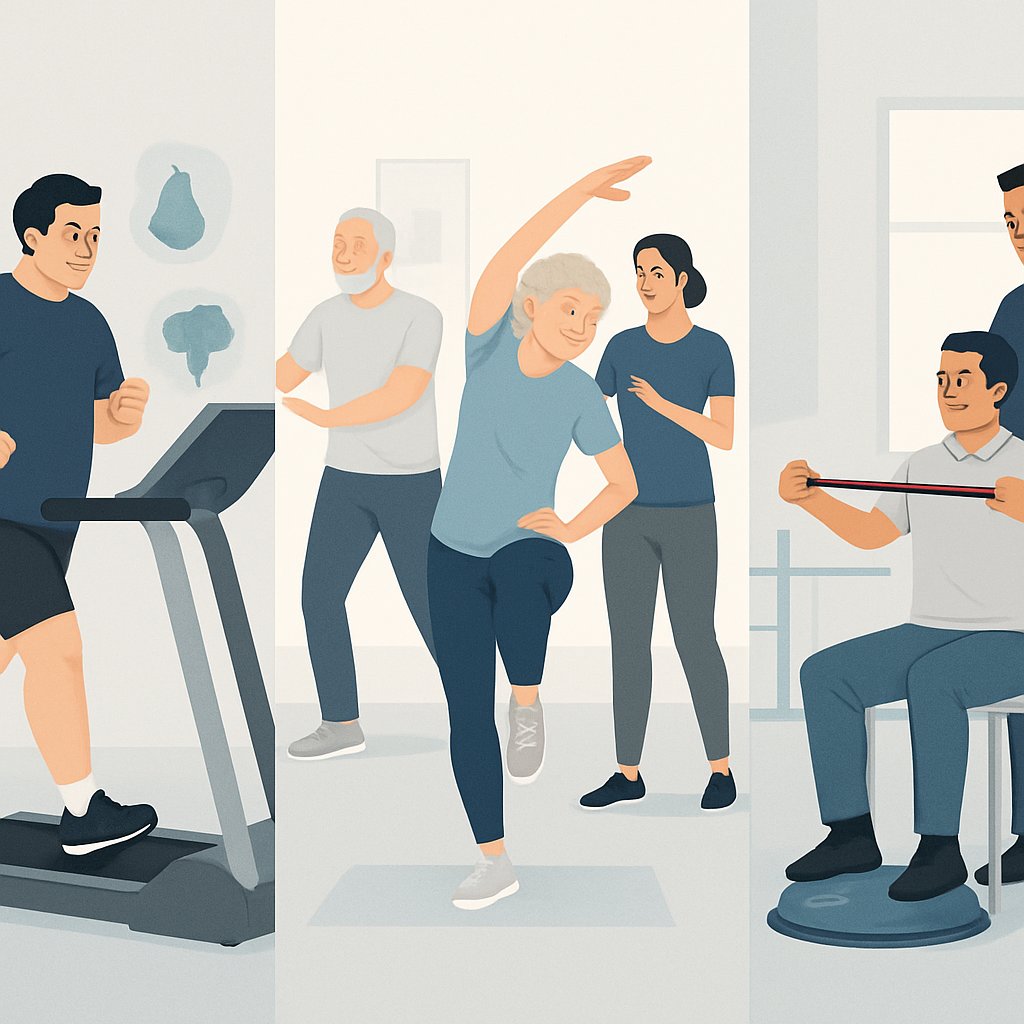
Picking the right training program isn’t as simple as just googling “personal trainer.” You need to know about safety, credentials, and how trainers assess your needs—especially for weight loss, seniors, or folks bouncing back from medical stuff.
What are the key considerations when choosing a weight loss training program?
Look for programs that mix cardio with some solid strength training. Weight loss occurs when calories consumed are less than calories expended, so eating habits matter as much as workouts.
Your Manhattan trainer should build a plan with both cardio and resistance moves. This way, you’ll burn more calories during and even after your session.
Meal planning tips or nutrition guidance should be part of the deal. The best NYC programs often blend wellness coaching with training, which honestly just makes sense.
How can senior citizens benefit from specialized fitness programs?
Senior fitness programs are designed to improve balance, strength, and mobility—and they’re all about safety. These programs help older adults stay independent and cut down on falls.
You get exercises that target stiff joints and weak muscles, which just comes with age. Manhattan trainers who focus on seniors know exactly how to help.
Senior fitness programs boost health, prevent falls, and support independence for active aging after 60. Regular workouts can really lift your quality of life.
What credentials should a fitness professional have to offer post-rehabilitation exercise guidance?
Your trainer should have a Post Rehab Conditioning Specialist (PRCS) certification, which is an entry-level certification to begin managing medical conditions with exercise. This covers safe exercise for more than 30 medical issues.
With PRCS, trainers know how to work with you after physical therapy ends. That means your NYC trainer can confidently guide you from rehab to regular fitness.
Extra certifications in corrective or medical exercise are a nice bonus. A lot of Manhattan trainers stack up credentials to cover all kinds of client needs.
What should be included in a fitness assessment for older adults before starting a training regimen?
Your assessment should check balance, flexibility, and heart health. These tests spot risks and set your starting point.
Functional movement screening shows how you handle everyday stuff—standing, walking, reaching. Upper East Side trainers use these to build workouts that fit your real life.
Going over medical history and medications is key. Your trainer has to know about any health issues that could affect your exercise plan.
How does a Senior Fitness Specialist certification enhance a trainer’s expertise?
This certification teaches trainers how to adjust exercises and safety steps for older adults. They learn what aging does to muscles, bones, and your heart.
It covers fall prevention and balance drills, which are pretty crucial. Midtown NYC trainers with this cert can handle most senior health concerns.
Training goes into program design for all fitness levels and medical backgrounds. That means your trainer can put together safe, effective workouts that actually fit your goals.
What are the recommendations for safely progressing exercise intensity in senior fitness programs?
Start with low-impact activities. Let yourself get comfortable before ramping up the intensity.
Weight training for seniors requires safe, effective exercises to build functional strength with smart progression. Go at a pace that feels right, not rushed.
If you’ve got a personal trainer in the West Village, they should keep an eye on how you react to each workout. Things like heart rate, how hard you feel you’re working, and how quickly you recover all help decide when to push forward.
Most folks do well with weekly bumps of about 5-10% in either exercise duration or resistance. Your trainer can tweak that, depending on how you’re feeling or if you’ve got any health stuff going on.
